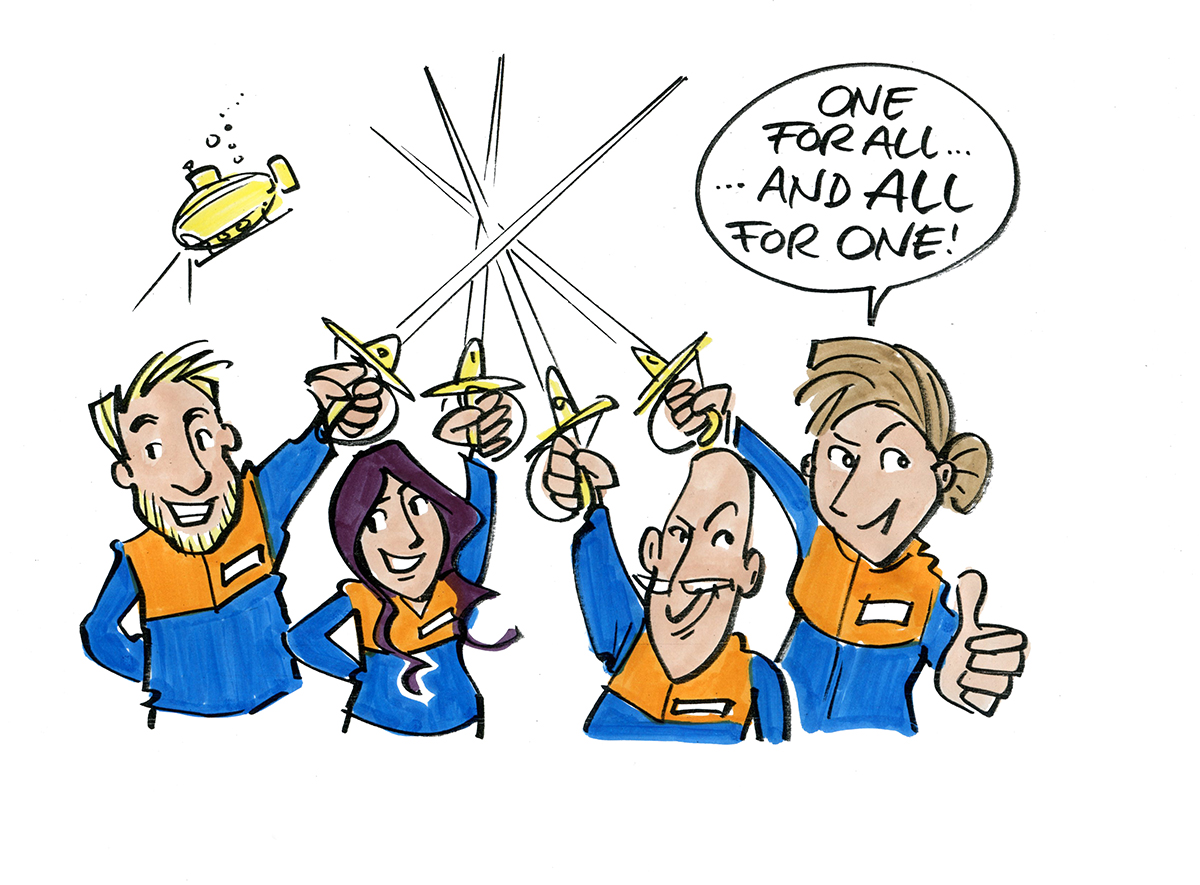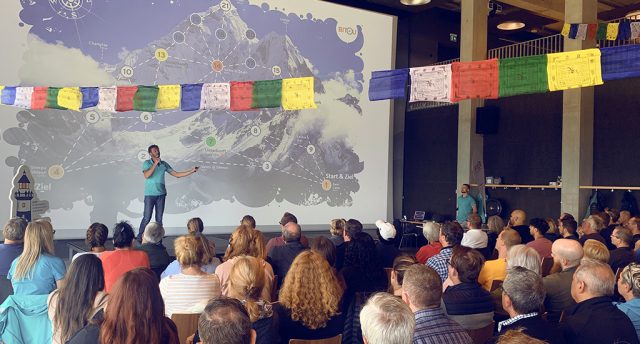It is high time to rethink employee motivation!

If you ask ChatGPT: “how can I motivate employees sustainably?” you get the following answer:
In order to motivate employees in the long term and sustainably, praise and recognition are most important.
1. essential for sustainable motivation in the home office is trust. This means: Give workers the freedom to organise themselves. Excessive control and excessive micromanagement only make for frustrated and demotivated workers.
2. there are many strategies to motivate employees sustainably, such as creating a positive working atmosphere, encouraging further training, introducing flexible working hours, recognising achievements and much more.
Unfortunately, this complex issue of employee motivation is not as simple as this statement makes it out to be.
We praise our employees, give them freedom and create a positive working atmosphere… and all is well – that is the wishful thinking.
These factors described above are of course important and also indispensable, but the practice goes far beyond the above tricks of employee motivation, which one can read about in the literature.
Despite this initially unsatisfactory outcome of ChatGPT, AI did pique my interest. I wanted to find out how deeply it really understood employee motivation. I also wanted to see if the knowledge we have from BITOU on this topic could also be picked up by the AI.
Thus, I continued my dialogue with ChatGPT – pretty much following the pattern of how clients often encounter me in counselling sessions.
How can I motivate employees?
- What incentives can I set to motivate employees?
- What possibilities do I have as a manager to motivate employees?
My new AI consultant gives me some pretty good answers to all these questions (test it yourself!).
So you don’t have to look far for the basis of employee motivation. It is much more important to distinguish the good information from the very good and really useful information.
However, if I as a team leader or boss want deeper, more sustainable changes to motivate my employees and colleagues, I need to understand the psychology behind the phenomenon of motivation in more detail.
Let’s start with “praise and recognition”. According to Gary Chapman and Paul White, praise and recognition is only one of 5 languages we can use to value and thus motivate colleagues and employees. There are also 4 other languages: Gifts, taking time, or helpfulness.
This means that I will not significantly appreciate or motivate an employee whose helpfulness is most important by praising him or her.
It is therefore worthwhile to know exactly what makes colleagues “tick” in order to meet them in their language and motivate them in a targeted manner.
Surely you are familiar with the situation that you cannot motivate employees, colleagues or yourself to do certain tasks or to do other tasks immediately and without hesitation. For these “love to do” tasks, the motivation is already within you. Then we speak of intrinsic motivation or the so-called DELIs (Deeply embedded life interests are long-standing, emotionally driven passions that are closely interwoven with personality and thus born out of an indeterminate mix of nature and nurture. They do not determine what people are good at, but drive what kind of activities make them happy – Havard study).
Whether we are motivated and productive at work is strongly related to the DELIs.
Whether teams realise their performance potential and whether it is fun to work in this team is also a result of motivation and appreciation.
If we manage to assemble teams in such a way that all the motivators needed to solve the tasks at hand are present, then we create high-performance teams in which there is a lot of joy and productivity at work.
Of course, teams cannot always be reorganised in such a way that all motivators are immediately present. However, team motivation and enjoyment of work can often be significantly increased if tasks are redistributed according to the DELIs.
It would be naïve to expect that every employee spends 100% of their work on tasks that correspond to their DELIs. But already 70% or 80% make people significantly happier and more successful.
If the supervisors then additionally increase the motivation of the employees by addressing them in the right language of appreciation, employee loyalty and team health demonstrably increase.
However, through our many years of experience, we have also seen that very few people know their motivators and appreciation languages (let alone those of their colleagues).
When this “problem” became clear to us, I was reading the book “The Penguin Principle” by John Kotter and Holger Rathgeber. I thought to myself: “If one person knows about this topic, it’s probably these two” – and so one thing led to another and a few weeks later I was sitting with Holger at the first meeting in the beautiful Black Forest.
We thought for a long time about how we could shape the topic of motivation through appreciation and intrinsic motivation for managers and team members in such a way that it would not be bogged down in dry theory, texts and frontal lectures.
Actually, it’s quite simple, as always, we have to get people communicating and self-reflecting with each other. Of course, this is generally valid for many topics and problems. But becoming aware of the motivators within and taking them into account as a leader in the team brings huge added value. So it is worthwhile to deal with this topic. However, in the context of the work environment, this should not only be dry theory, but also fun, so that the hurdle to implementation remains as low as possible.
Holger and I agreed right away that we needed a very good and well-founded solution here. Therefore, we packed the topic into a story and worked out a concept for it, which contains scientific components. You can find the result here: Deep Sea Expedition – Intrinsic Motivators | BITOU
We recommend every manager and every team to deal with this topic and thus have the chance to increase their own motivation at work and to advance the team.
What do you use to motivate your team? Tell us about your experiences.
Why individualisation increases team spirit
Whether individualising the content of our team events and team developments, own branding for the recognisable and individual image, up to the new conception of team events, we offer you the whole range of individual solutions for your company-specific occasion. In a detailed consultation, we work with you to find out how we can individually implement your requirements and create an unforgettable team experience.




